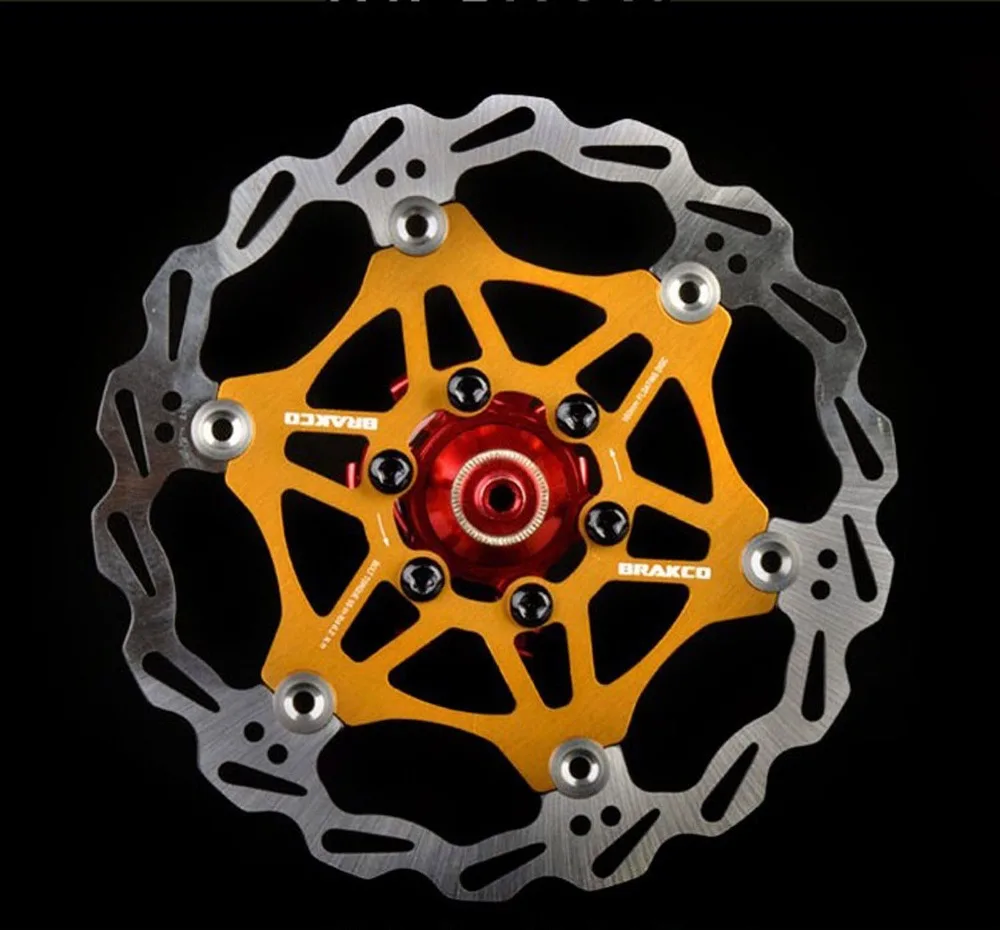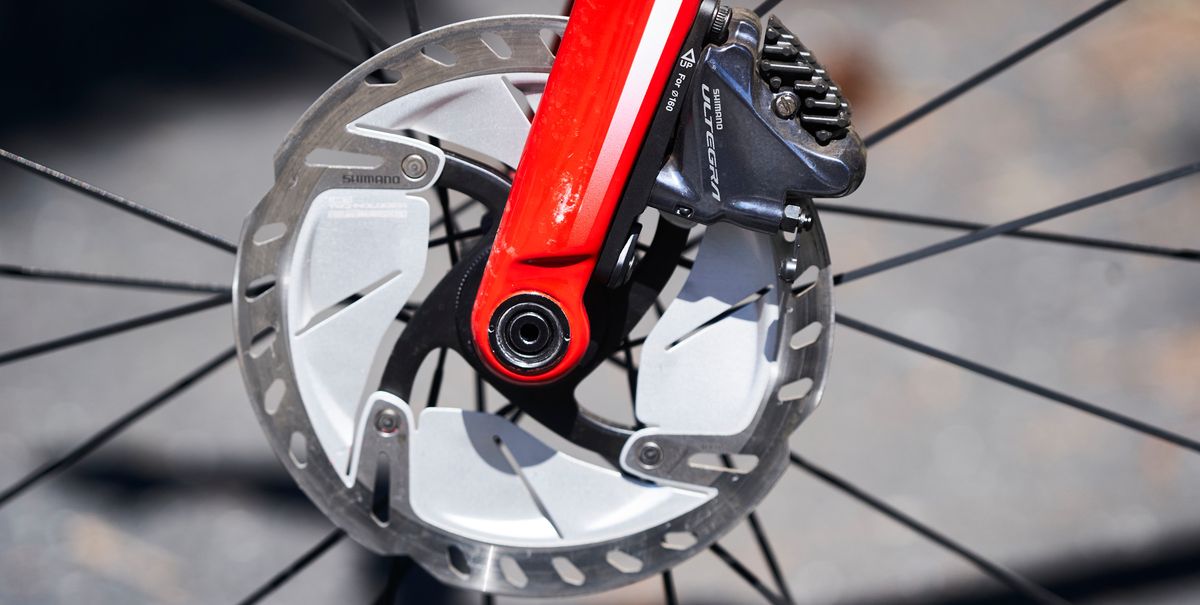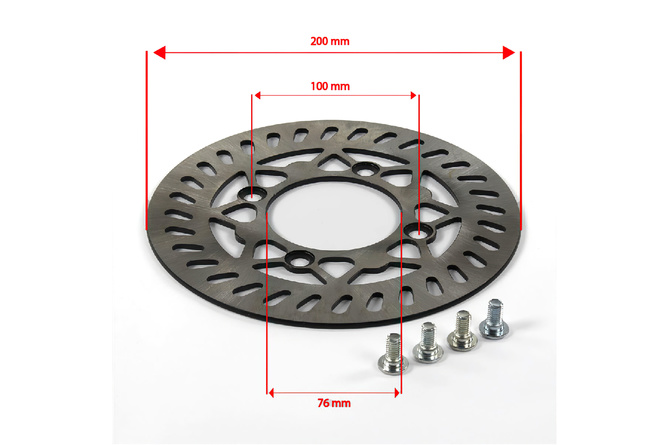Understanding the Role of Disc Brake Rotors in Mountain Biking
Disc brake rotors play a crucial role in providing reliable and consistent braking power for mountain bikes. Unlike traditional rim brakes, disc brakes offer improved stopping power and better performance in wet and muddy conditions. This is especially important for mountain biking, where riders often encounter steep descents, technical trails, and unpredictable weather conditions.
Disc brake rotors work by transferring the braking force from the brake caliper to the rotor, which is attached to the wheel hub. As the rotor spins, the brake pads make contact with the rotor, slowing down the wheel and ultimately bringing the bike to a stop. The rotor’s design and material properties, such as its size, thickness, and heat dissipation capabilities, all contribute to its overall braking performance.
In mountain biking, disc brake rotors are particularly useful for their ability to provide consistent braking power, even in the most demanding conditions. For example, when riding down a steep and rocky trail, a disc brake rotor can help to slow down the bike quickly and reliably, giving the rider more control and confidence. Additionally, disc brake rotors are less prone to overheating and brake fade, which can occur when traditional rim brakes are subjected to repeated and intense braking.
When choosing a disc brake rotor for a mountain bike, it’s essential to consider factors such as the rotor’s size, material, and thickness. A larger rotor can provide more braking power, but may also increase the risk of overheating. A thicker rotor can provide more durability, but may also add weight to the bike. By selecting the right disc brake rotor for their specific needs and preferences, mountain bikers can optimize their braking performance and enjoy a safer and more confident ride.
How to Choose the Right Disc Brake Rotor for Your Mountain Bike
Choosing the right disc brake rotor for your mountain bike can be a daunting task, especially with the numerous options available in the market. However, by considering a few key factors, you can select a rotor that meets your specific needs and preferences. One of the most critical factors to consider is the rotor size. A larger rotor can provide more braking power, but may also increase the risk of overheating. On the other hand, a smaller rotor may not provide enough braking power, especially for heavier riders or those who ride in hilly or mountainous terrain.
Another factor to consider is the material of the rotor. Disc brake rotors are typically made from steel, aluminum, or a combination of both. Steel rotors are more durable and resistant to wear, but may be heavier than aluminum rotors. Aluminum rotors, on the other hand, are lighter and provide better heat dissipation, but may be more prone to wear and tear. Some popular disc brake rotor brands and models, such as Shimano and SRAM, offer a range of rotor sizes and materials to suit different riding styles and preferences.
In addition to rotor size and material, it’s also essential to consider the thickness of the rotor. A thicker rotor can provide more durability and resistance to wear, but may also add weight to the bike. A thinner rotor, on the other hand, may be lighter and provide better heat dissipation, but may be more prone to warping or scoring. When selecting a disc brake rotor, it’s crucial to balance these factors and choose a rotor that meets your specific needs and preferences.
Some popular disc brake rotor models for mountain bikes include the Shimano XT and SRAM Guide. These rotors are designed to provide reliable and consistent braking power, even in the most demanding conditions. They are also made from high-quality materials and are designed to be durable and resistant to wear. When choosing a disc brake rotor, it’s essential to consider your specific needs and preferences, as well as the type of riding you will be doing. By selecting the right rotor, you can optimize your mountain bike’s braking performance and enjoy a safer and more confident ride.
The Benefits of Upgrading to a High-Performance Disc Brake Rotor
Upgrading to a high-performance disc brake rotor can significantly improve the braking performance of your mountain bike. High-performance rotors are designed to provide improved braking power, reduced fade, and increased durability. These rotors are typically made from high-quality materials, such as stainless steel or titanium, and are designed to withstand the demands of aggressive mountain biking.
One of the main benefits of high-performance disc brake rotors is improved braking power. These rotors are designed to provide more consistent and reliable braking, even in the most demanding conditions. This is especially important for mountain bikers who ride in hilly or mountainous terrain, where braking power is critical for safety and control. High-performance rotors can also provide reduced fade, which is the loss of braking power due to heat buildup. This means that you can ride with confidence, knowing that your brakes will perform consistently, even on long descents.
Another benefit of high-performance disc brake rotors is increased durability. These rotors are designed to withstand the rigors of mountain biking, including rough terrain, inclement weather, and heavy use. They are typically made from high-quality materials that are resistant to wear and tear, and are designed to last longer than standard rotors. This means that you can ride with confidence, knowing that your brakes will perform consistently, even in the most demanding conditions.
Some examples of high-performance disc brake rotors include the Shimano XT and SRAM Guide. These rotors are designed to provide improved braking power, reduced fade, and increased durability, making them ideal for aggressive mountain biking. They are also made from high-quality materials and are designed to withstand the demands of mountain biking. By upgrading to a high-performance disc brake rotor, you can take your mountain biking to the next level, with improved braking performance and increased confidence.
In addition to improved braking power and increased durability, high-performance disc brake rotors can also provide improved heat dissipation. This means that they can handle the heat generated by aggressive braking, without losing performance. This is especially important for mountain bikers who ride in hot and humid conditions, where heat buildup can be a major issue. By upgrading to a high-performance disc brake rotor, you can ride with confidence, knowing that your brakes will perform consistently, even in the most demanding conditions.
Disc Brake Rotor Maintenance and Replacement Tips
Regular maintenance is essential to ensure optimal braking performance from your disc brake rotors. One of the most important maintenance tasks is to inspect the rotors for wear and damage. Check the rotors for signs of excessive wear, such as scoring or warping, and replace them if necessary. It’s also important to clean and lubricate the rotors regularly to prevent corrosion and ensure smooth braking performance.
To inspect the rotors, remove the wheel and brake caliper, and visually inspect the rotor for signs of wear or damage. Check the rotor’s surface for scoring or warping, and measure the rotor’s thickness to ensure it’s within the manufacturer’s specifications. If the rotor is excessively worn or damaged, replace it with a new one.
Cleaning and lubricating the rotors is also crucial to maintain optimal braking performance. Use a soft-bristled brush to remove any debris or dirt from the rotor’s surface, and then apply a small amount of lubricant to the rotor’s surface. This will help to prevent corrosion and ensure smooth braking performance.
Replacing the rotors is a relatively straightforward process, but it’s essential to follow the manufacturer’s instructions to ensure proper installation. Remove the old rotor and install the new one, making sure to align it properly with the brake caliper. Tighten the rotor bolts securely, but avoid over-tightening, which can damage the rotor or brake caliper.
Regular maintenance and replacement of disc brake rotors can help to ensure optimal braking performance and prevent accidents. By following these tips and guidelines, you can keep your mountain bike’s brakes in top condition and enjoy safe and confident riding.
In addition to regular maintenance and replacement, it’s also important to consider the type of riding you’ll be doing when selecting a disc brake rotor. For example, if you’ll be riding in hilly or mountainous terrain, you may want to consider a rotor with a larger diameter to provide improved braking power. On the other hand, if you’ll be riding in flat terrain, a smaller rotor may be sufficient.
Common Issues with Disc Brake Rotors and How to Troubleshoot Them
Disc brake rotors can be prone to various issues, including warping, scoring, and excessive wear. These issues can affect the performance and safety of your mountain bike’s brakes. In this section, we will discuss common issues with disc brake rotors and provide troubleshooting tips and solutions for addressing these issues.
Warping is a common issue with disc brake rotors, especially when they are exposed to excessive heat or stress. Warping can cause the rotor to become uneven, leading to poor braking performance and potentially causing the brake caliper to drag on the rotor. To troubleshoot a warped rotor, try truing the rotor using a rotor truing tool. If the rotor is severely warped, it may need to be replaced.
Scoring is another common issue with disc brake rotors, especially when they are exposed to debris or dirt. Scoring can cause the rotor to become rough, leading to poor braking performance and potentially causing the brake pads to wear down faster. To troubleshoot a scored rotor, try cleaning the rotor with a soft-bristled brush and lubricating it with a small amount of lubricant. If the rotor is severely scored, it may need to be replaced.
Excessive wear is also a common issue with disc brake rotors, especially when they are exposed to heavy use or poor maintenance. Excessive wear can cause the rotor to become thin, leading to poor braking performance and potentially causing the brake caliper to drag on the rotor. To troubleshoot excessive wear, try measuring the rotor’s thickness and comparing it to the manufacturer’s specifications. If the rotor is excessively worn, it may need to be replaced.
In addition to these common issues, disc brake rotors can also be prone to other problems, such as corrosion or brake pad contamination. To prevent these issues, it’s essential to regularly maintain and inspect your disc brake rotors, including cleaning and lubricating them, and checking for signs of wear or damage.
By troubleshooting common issues with disc brake rotors, you can ensure optimal braking performance and safety on your mountain bike. Remember to always follow the manufacturer’s instructions and guidelines for maintenance and repair, and to seek professional help if you’re unsure about how to troubleshoot or repair your disc brake rotors.
Disc Brake Rotor Compatibility and Interchangeability
When it comes to selecting a disc brake rotor for your mountain bike, compatibility is a crucial factor to consider. Ensuring that the rotor is compatible with other brake components, such as brake calipers and brake pads, is essential for optimal braking performance and safety.
Disc brake rotors are designed to work in conjunction with specific brake calipers and brake pads, and using incompatible components can lead to poor braking performance, reduced safety, and potentially even accidents. Therefore, it’s essential to check the compatibility of the rotor with other brake components before making a purchase.
Some disc brake rotors are designed to be interchangeable between different brands and models, while others may be specific to a particular brand or model. For example, Shimano disc brake rotors are designed to be compatible with Shimano brake calipers and brake pads, while SRAM disc brake rotors are designed to be compatible with SRAM brake calipers and brake pads.
When selecting a disc brake rotor, it’s essential to check the manufacturer’s specifications and recommendations for compatibility. This information can usually be found on the manufacturer’s website or in the product manual. Additionally, it’s a good idea to consult with a professional mechanic or bike shop if you’re unsure about the compatibility of a particular rotor with your mountain bike’s brake system.
In addition to compatibility, it’s also important to consider the interchangeability of disc brake rotors between different brands and models. Some rotors may be designed to be interchangeable, while others may not be. For example, some Shimano disc brake rotors may be interchangeable with SRAM brake calipers and brake pads, while others may not be.
By ensuring compatibility and interchangeability between disc brake rotors and other brake components, you can optimize your mountain bike’s braking performance and safety. Remember to always check the manufacturer’s specifications and recommendations, and consult with a professional mechanic or bike shop if you’re unsure about compatibility or interchangeability.
The Impact of Disc Brake Rotor Size on Braking Performance
Disc brake rotor size can have a significant impact on braking performance, particularly in mountain biking. Larger rotors can provide improved braking power and reduced fade, while smaller rotors may not provide enough braking power, especially for heavier riders or those who ride in hilly or mountainous terrain.
The size of the disc brake rotor is measured in millimeters, and common sizes range from 140mm to 203mm. Larger rotors, such as 180mm or 203mm, are typically used on mountain bikes, while smaller rotors, such as 140mm or 160mm, are typically used on road bikes or cross-country mountain bikes.
Larger rotors provide improved braking power and reduced fade because they have a greater surface area, which allows for more heat dissipation. This means that the rotor can handle more braking force without overheating, which can lead to reduced braking performance. Additionally, larger rotors tend to be more durable and less prone to warping or scoring.
However, larger rotors also have some drawbacks. They can be heavier, which can affect the overall weight and handling of the bike. Additionally, larger rotors may require more maintenance, as they can be more prone to wear and tear.
When choosing a disc brake rotor size, it’s essential to consider your specific needs and preferences. If you’re a heavier rider or ride in hilly or mountainous terrain, a larger rotor may be necessary to provide enough braking power. On the other hand, if you’re a lighter rider or ride in flat terrain, a smaller rotor may be sufficient.
Some popular disc brake rotor sizes for mountain bikes include 180mm and 203mm. These sizes provide a good balance between braking power and weight, and are suitable for most mountain biking applications. However, it’s essential to check the manufacturer’s specifications and recommendations for the specific bike and brake system you’re using.
Conclusion: Optimizing Your Mountain Bike’s Braking Performance with the Right Disc Brake Rotor
In conclusion, selecting the right disc brake rotor for your mountain bike is crucial for optimizing braking performance and ensuring safety on the trails. By understanding the importance of disc brake rotors, choosing the right rotor size, material, and thickness, and maintaining and replacing them regularly, you can improve your mountain bike’s braking performance and enjoy a more confident and controlled ride.
Remember to consider your specific needs and preferences when choosing a disc brake rotor, including your riding style, terrain, and bike type. With the right disc brake rotor, you can take your mountain biking to the next level and enjoy a more exhilarating and rewarding experience.
By following the tips and guidelines outlined in this article, you can optimize your mountain bike’s braking performance and ensure a safe and enjoyable ride. Whether you’re a seasoned mountain biker or just starting out, selecting the right disc brake rotor is an essential step in getting the most out of your bike and enjoying the thrill of mountain biking.
So, don’t wait any longer to upgrade your mountain bike’s braking performance. Choose the right disc brake rotor for your needs and preferences, and experience the difference it can make on the trails. With the right disc brake rotor, you can ride with confidence and control, and enjoy the ultimate mountain biking experience.








